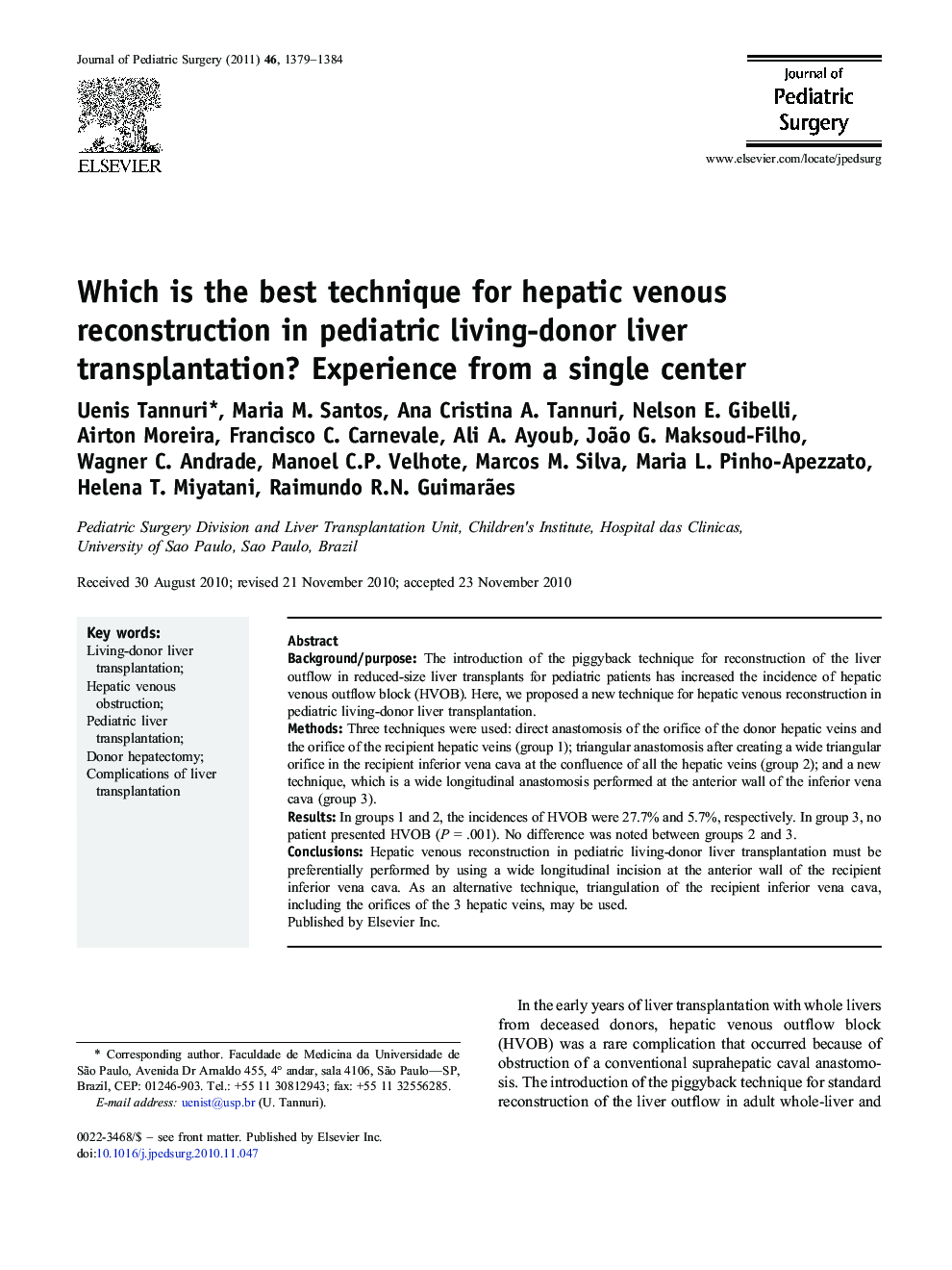| Article ID | Journal | Published Year | Pages | File Type |
|---|---|---|---|---|
| 4156639 | Journal of Pediatric Surgery | 2011 | 6 Pages |
Background/purposeThe introduction of the piggyback technique for reconstruction of the liver outflow in reduced-size liver transplants for pediatric patients has increased the incidence of hepatic venous outflow block (HVOB). Here, we proposed a new technique for hepatic venous reconstruction in pediatric living-donor liver transplantation.MethodsThree techniques were used: direct anastomosis of the orifice of the donor hepatic veins and the orifice of the recipient hepatic veins (group 1); triangular anastomosis after creating a wide triangular orifice in the recipient inferior vena cava at the confluence of all the hepatic veins (group 2); and a new technique, which is a wide longitudinal anastomosis performed at the anterior wall of the inferior vena cava (group 3).ResultsIn groups 1 and 2, the incidences of HVOB were 27.7% and 5.7%, respectively. In group 3, no patient presented HVOB (P = .001). No difference was noted between groups 2 and 3.ConclusionsHepatic venous reconstruction in pediatric living-donor liver transplantation must be preferentially performed by using a wide longitudinal incision at the anterior wall of the recipient inferior vena cava. As an alternative technique, triangulation of the recipient inferior vena cava, including the orifices of the 3 hepatic veins, may be used.
